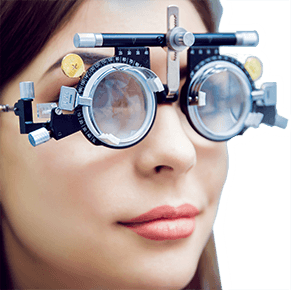What's the difference between ocular migraines and visual migraines?

What is an ocular migraine?
An ocular migraine is a rare condition characterized by temporary vision loss or even temporary blindness in one eye. Ocular migraines are caused by reduced blood flow or spasms of blood vessels in the retina or behind the eye.
In an ocular migraine, vision in the affected eye generally returns to normal within an hour. Ocular migraines can be painless or they can occur along with (or following) a migraine headache. Ocular migraines are also called retinal migraines.
Unfortunately, "ocular migraine" often is used to describe a much more common (and harmless) condition — called a visual migraine or migraine aura.
Visual migraines also cause temporary vision disturbances. But the vision problems caused by visual migraines affect both eyes, not just one eye, and tend to be somewhat shorter — usually around 20 minutes in duration.
Now, let’s take a closer look at ocular migraines (retinal migraines) and visual migraines (migraine auras).
Ocular migraine and visual migraine symptoms
Ocular migraine symptoms generally include a small blind spot that affects your central vision in one eye. This blind spot gets larger, making it impossible for you to drive safely or read with the affected eye.
In some cases, the entire visual field of one eye may be affected. Generally, the episode lasts less than an hour.
Visual migraine symptoms can vary, and may include:

A flickering blind spot in the centre or near the centre of your field of view
A wavy or zigzag ring of coloured light surrounding a central blind spot
A blind spot that slowly migrates across your visual field
The symptoms of a visual migraine typically affect both eyes and last 30 minutes or less. A migraine headache may occur shortly after the symptoms of a visual migraine subside or no headache may occur.
If you're experiencing a blind spot or other visual disturbance and you're not sure if it's an ocular migraine or a visual migraine, then cover one eye at a time. If the visual disturbance is occurring in just one eye, it's likely that it's an ocular migraine. If it affects both eyes, it's probably a visual migraine.
But don't take chances. If you suddenly experience any sort of blind spot in your field of vision, call or consult an eye doctor immediately to determine if it's harmless or possibly a sign of something more serious, such as a retinal detachment.
SEE RELATED: Headache behind the eyes: Causes and treatment
What causes ocular and visual migraines?
The exact cause of an ocular migraine can be difficult to pinpoint. But it's believed they occur for the same things that cause migraine headaches.
Migraine headaches have a genetic basis, and some studies say that up to 70% of people who suffer from the disorder have a family history of migraine.
According to the World Health Organization (WHO), migraines are caused by the activation of a mechanism deep in the brain that leads to release of pain-producing inflammatory substances around the nerves and blood vessels of the head.
Studies have shown changes in blood flow to the brain during ocular migraines (retinal migraines) and migraine auras (visual migraines). But exactly why this happens remains unclear.
Common migraine "triggers" that can cause a person to have a migraine attack (both ocular migraines and visual migraines) include:
Certain foods (such as aged cheese and smoked meats)
Caffeinated drinks
Chocolate
MSG (and other processed food additives)
Artificial sweeteners
Cigarette smoke
Perfume
Bright or flickering lights
Stress and lack of sleep also can trigger an ocular migraine or visual migraine.
Treatment and prevention of ocular and visual migraines
As already noted, visual disturbances caused by ocular migraines and visual migraines typically disappear within an hour or less without treatment.
If you are driving or performing other tasks that require clear vision, when an ocular migraine or visual migraine occurs, stop what you are doing and relax until your vision returns to normal. (If you're driving, park on the side of the road and wait for the vision disturbances to completely pass.)
If you experience visual disturbances that are accompanied by a migraine headache, see your family Doctor or a neurologist for evaluation of your migraine episodes.
Your doctor can advise you on the latest medicines for treating migraines, including medicines designed to prevent future attacks.
It's also a good idea to keep a journal of your diet and activities just prior to your ocular migraine or migraine aura episodes to see if you can identify possible triggers that you can avoid in the future.
If your ocular migraines or migraine auras (visual migraines) appear to be stress-related, you might be able to reduce the frequency of your migraine attacks without medicine by simply:
Eating healthful meals on a regular basis
Avoiding common migraine triggers
Getting plenty of sleep
Trying stress-busters such as yoga and massage
Headache disorders. World Health Organization. Accessed May 2021.
Page published on Tuesday, 25 June 2019
Medically reviewed on Tuesday, 4 May 2021






